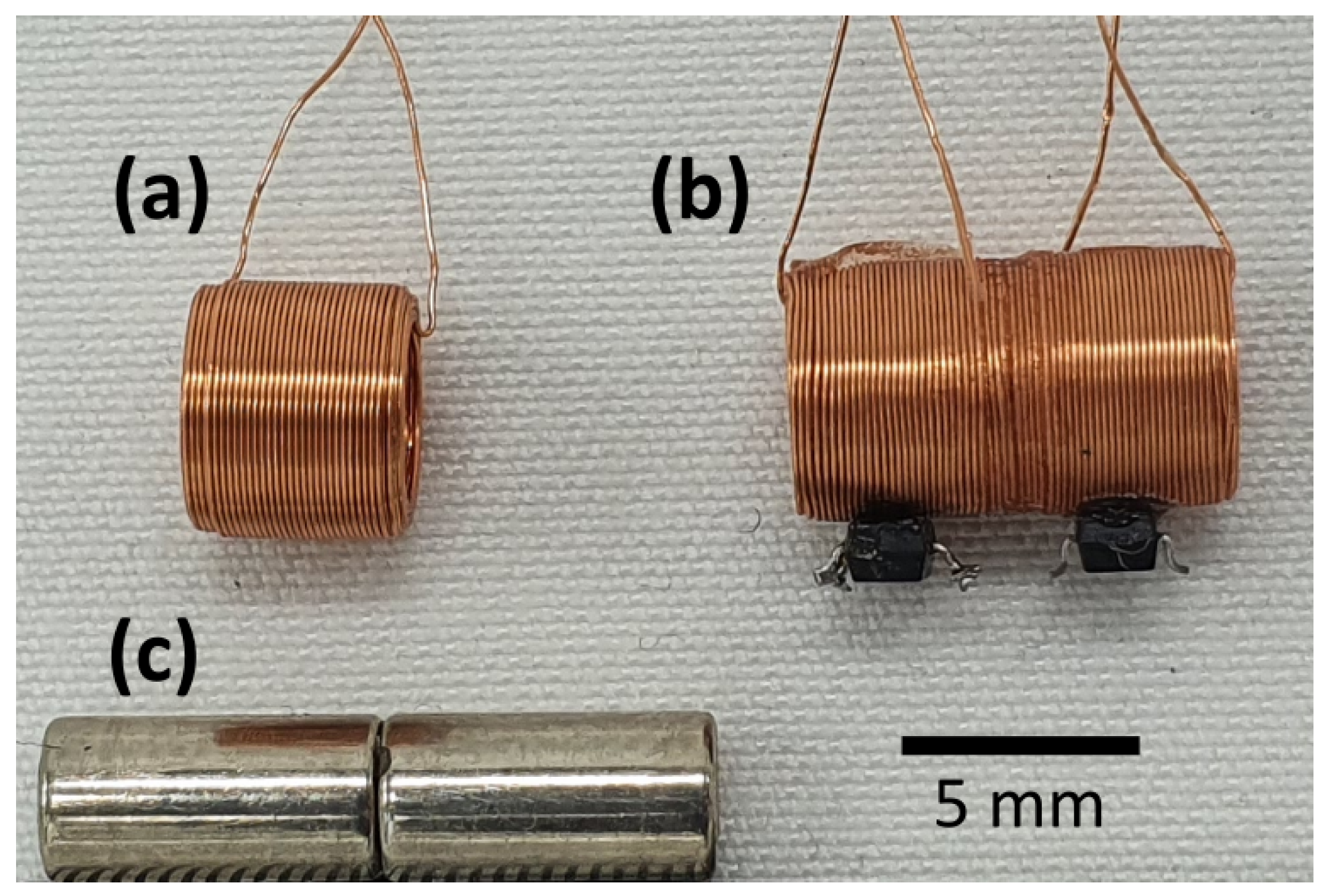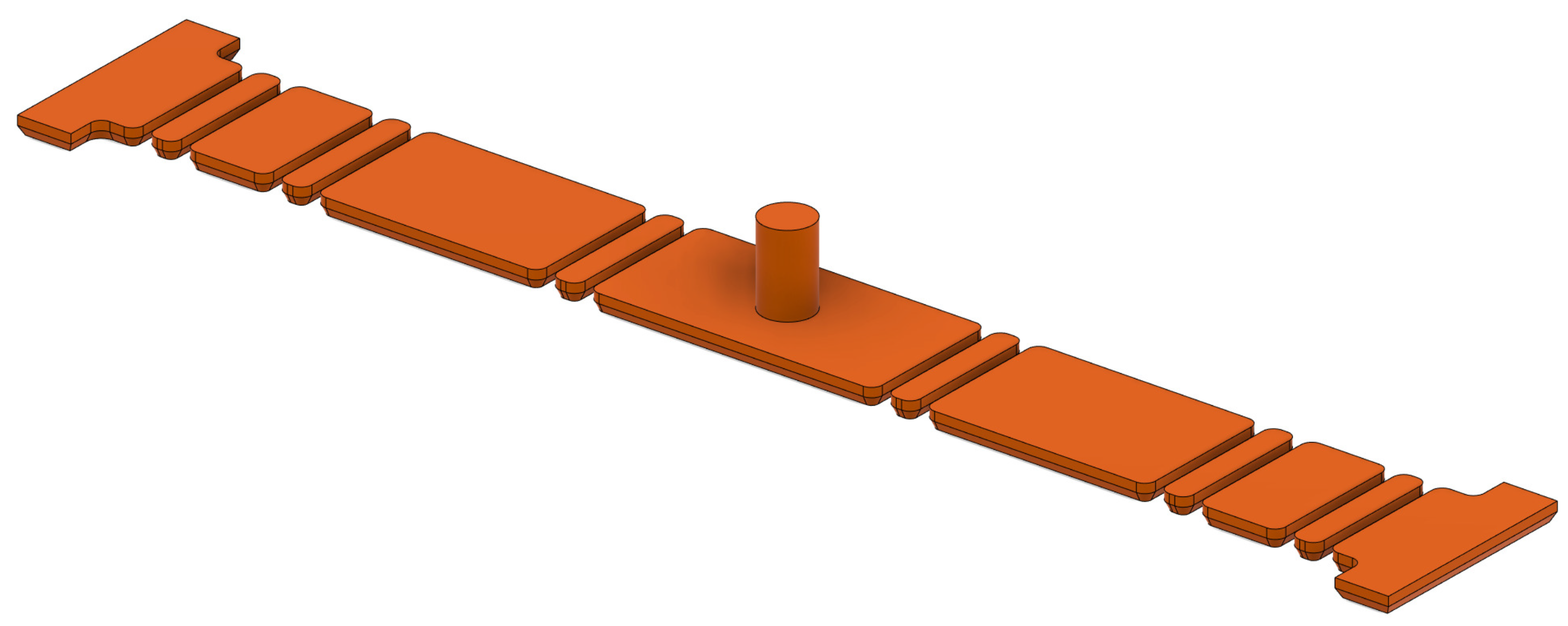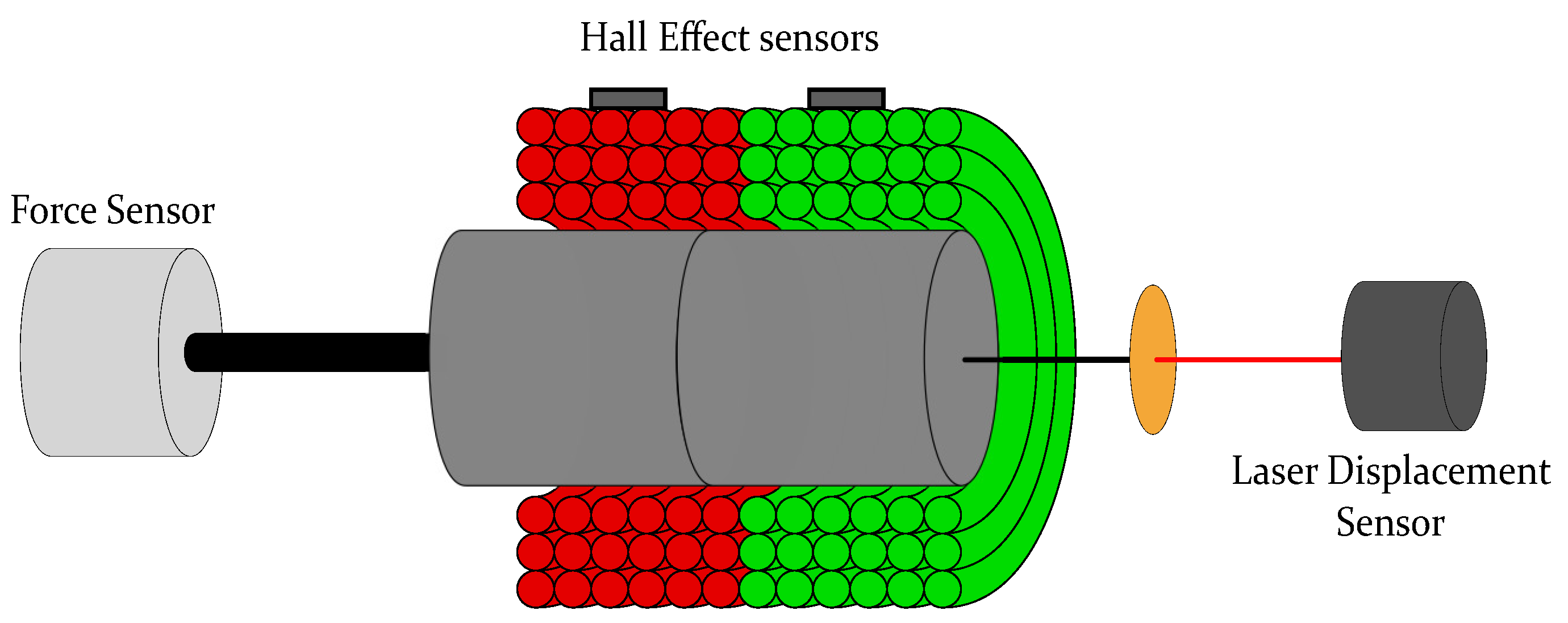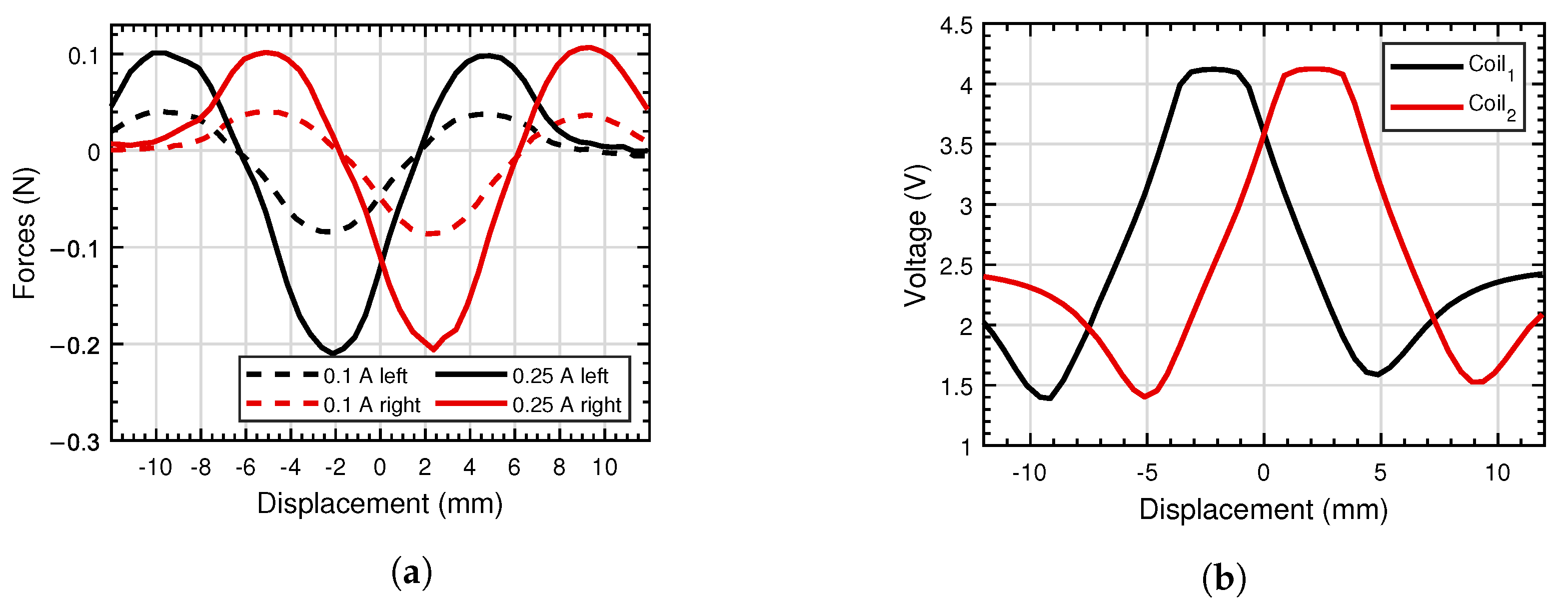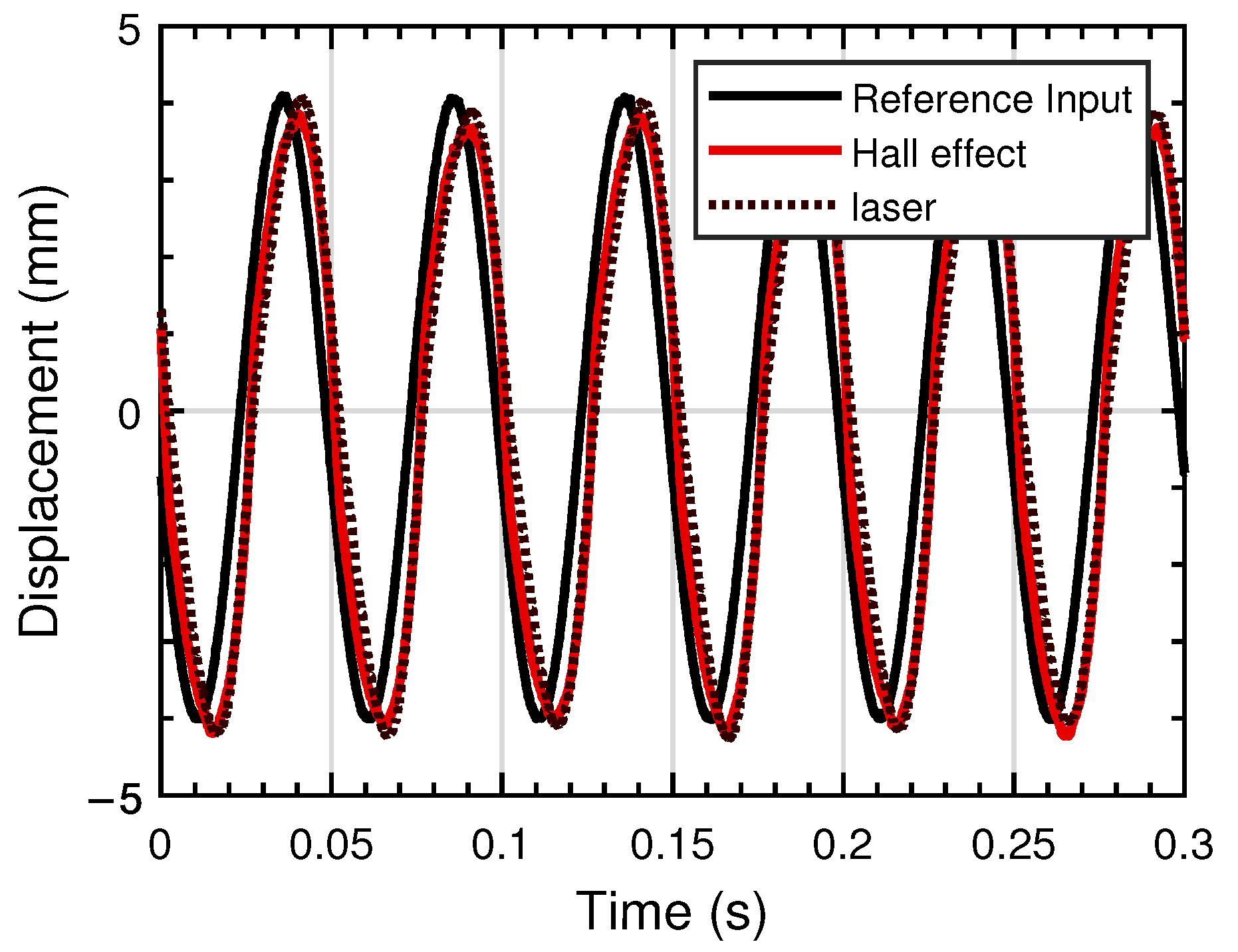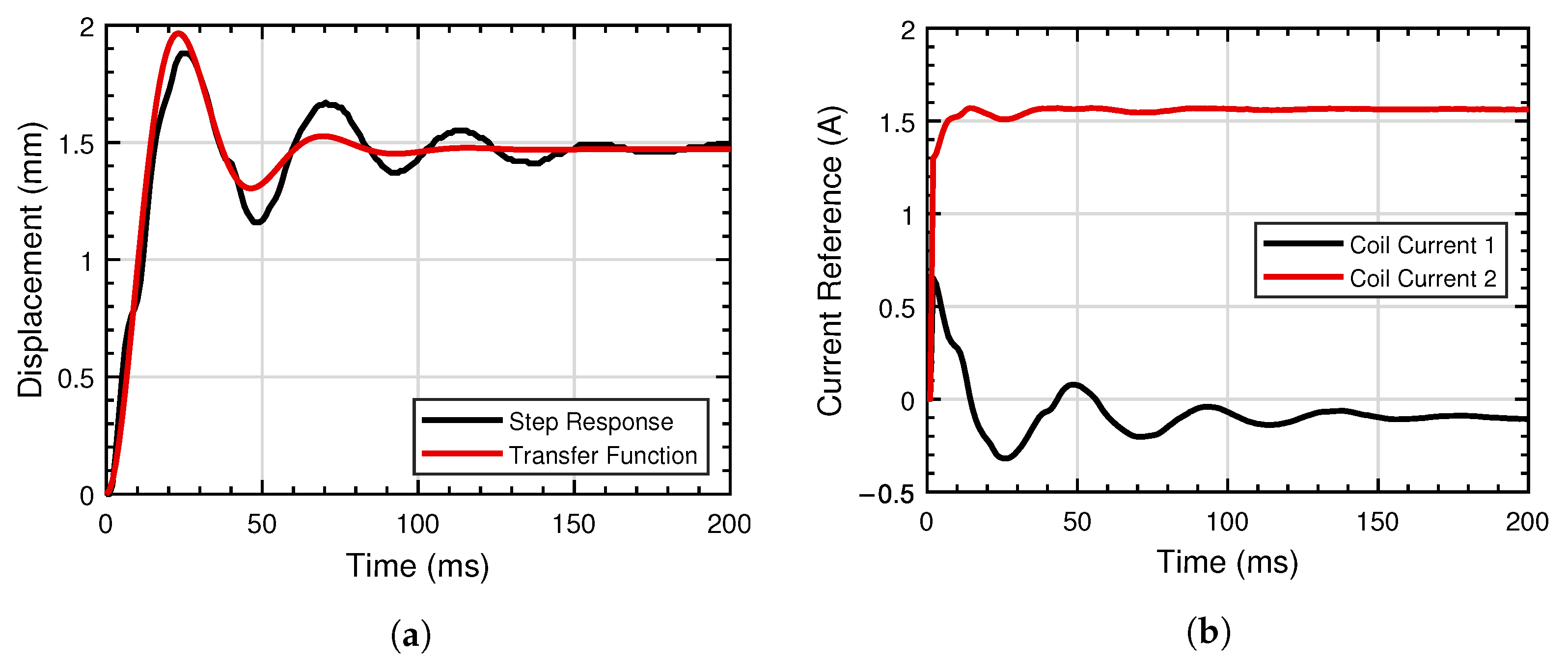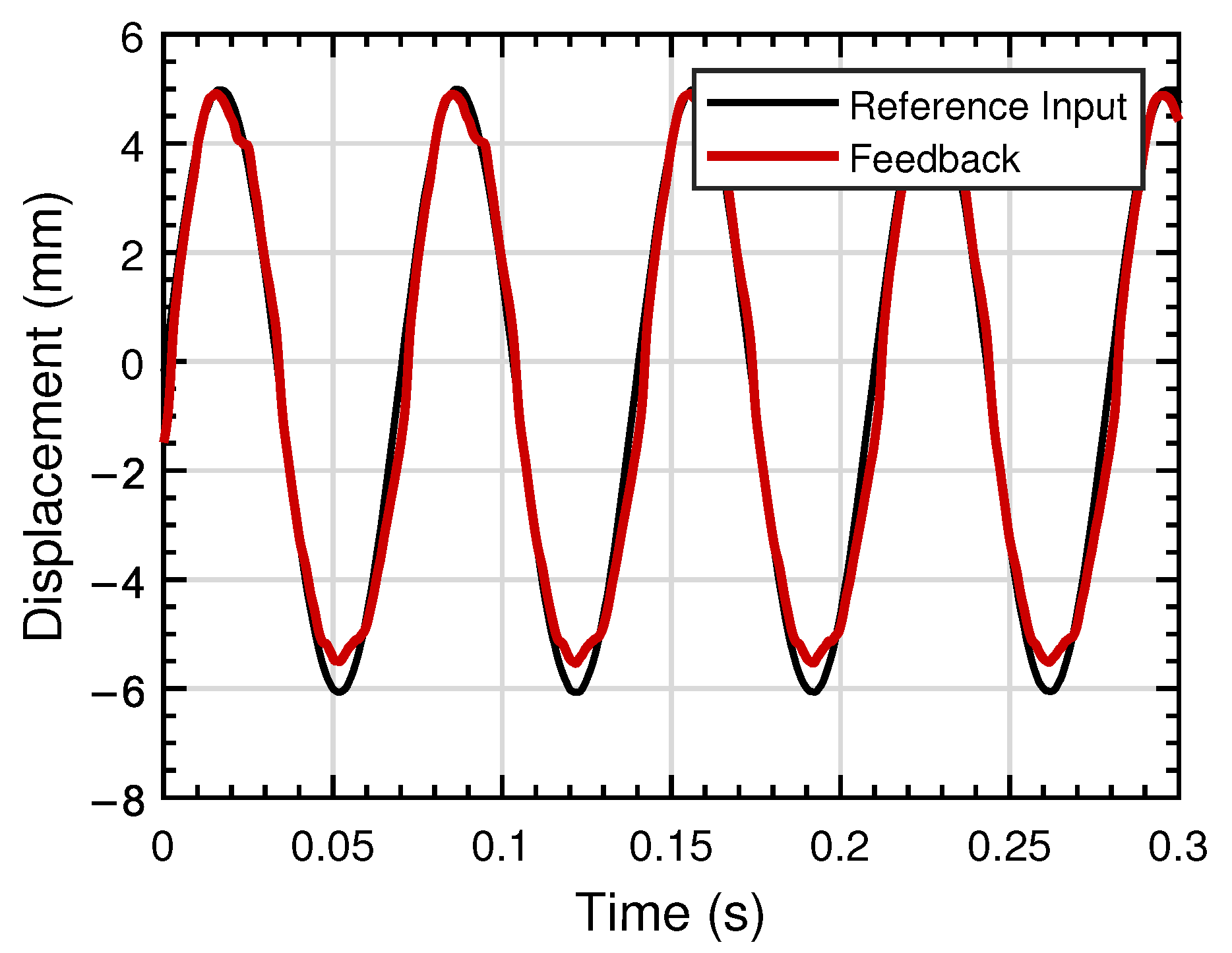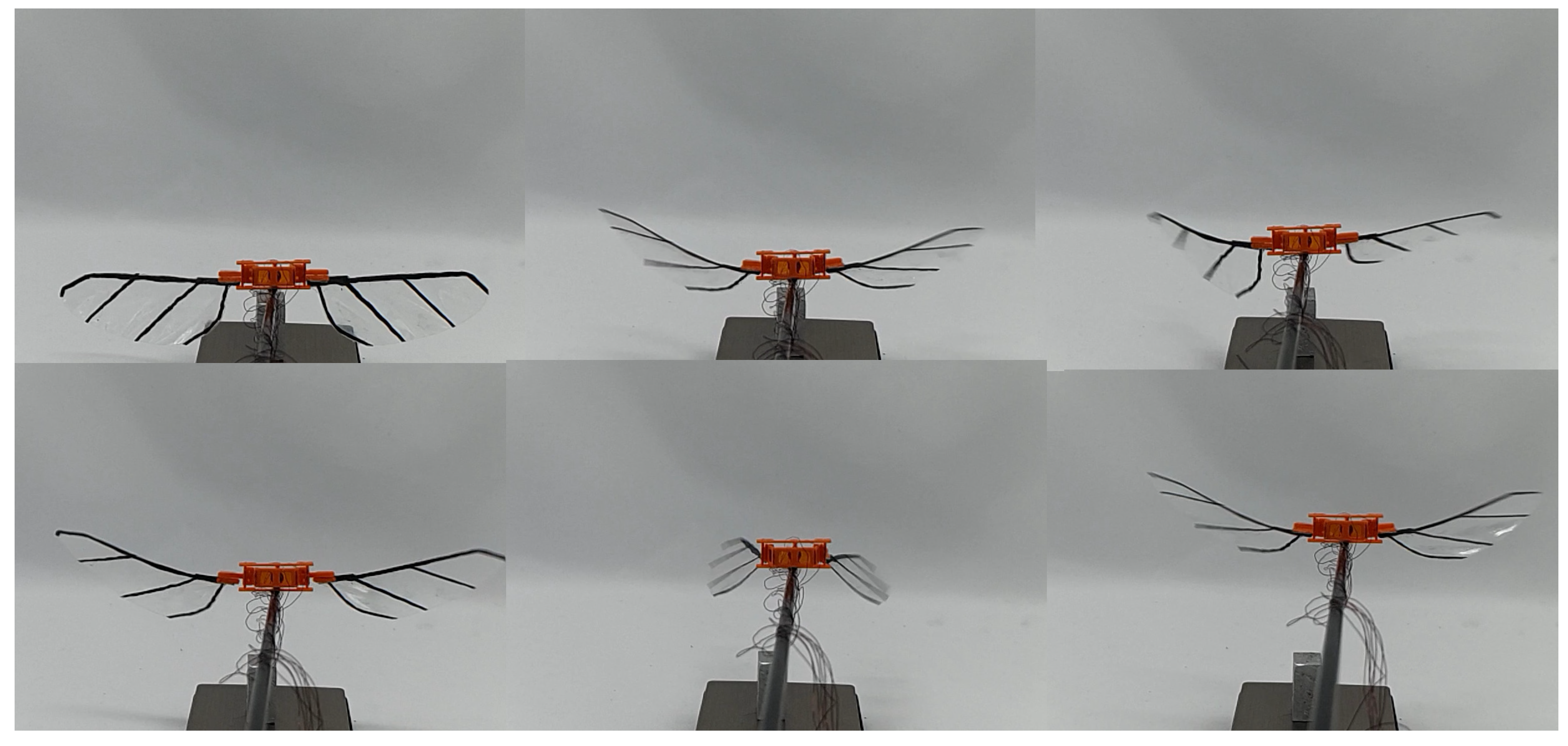1. Introduction
Dragonflies and other flying insects demonstrate the promise of agile and efficient flight that flapping wing drones will offer in the future by combining the desired traits of both fixed-wing and rotary-wing systems in an efficient way and at a scale that engineered systems have yet been able to achieve. Their unique direct-drive flight muscles deliver the high power required for aggressive maneuvers as well as the fine motor control required for precise motion. This is for the generation of unsteady aerodynamic phenomena [
1] through to sustained gliding flight under steady-state conditions [
2]. For many engineered systems, feedback control applied to individual wing beats is not feasible, or even useful, due to mechanism design, inertia, etc. Typically, control inputs are provided at a lower rate and higher level in the control system in response to changes in aircraft attitude or position, rather than wing position or aerodynamic load on wings. Additionally, the selection of the actuator system has significant implications for the design of flapping wing systems. One of the most common sources of electromotive force is intrinsically rotary: electromagnetic motors, of either brushed or brushless design. These systems reduce the high-speed rotary motion to a high torque output through a transmission with an output stage converting the continuous rotary motion into a reciprocating motion, possibly with additional twisting motions. These mechanisms benefit from the use of traditional rotary motors that provide high power density and efficiency [
3,
4,
5,
6]. The limitation of these mechanisms stems from the fixed kinematics of the mechanism. This limits the control inputs to the wing, with it being possible to control the angular velocity of the wing but not the amplitude. Another class of actuators is fixed frequency systems that utilise resonance to improve efficiency and performance. This encompasses many actuator types but, most significantly, piezoelectric and electromagnetic motors. Piezoelectric actuator systems are designed around the resonance point of the actuator and utilise amplitude modulation and limited modulation of the stroke velocity [
7]. A geared DC motor combined with a return spring allows for liftoff while operating at the resonant point of the actuator [
8,
9,
10]. Non-traditional electromagnetic systems demonstrated by Roll et al. utilised a virtual magnetic spring to reach the high frequencies required for flight [
11,
12].
Linear electromagnetic actuators have been used to generate a linear force that, in a single device, can act as an antagonistic pair of muscles. These types of actuators have been demonstrated at the insect scale [
13,
14]. The potential of these actuators to be implemented in direct wing actuation could provide high levels of control to the wing. These actuators have demonstrated their ability to achieve liftoff, yet can suffer from low efficiency [
15]. Previous work has investigated how these actuators can improve efficiency while not increasing actuation mass. Some of these past configurations required incorporating actuator feedback to realise these benefits [
16]. This study aims to implement the necessary actuator feedback to allow for improved actuator performance and to demonstrate how this technology enables a self-lifting, reciprocally actuated flapping configuration.
3. Feedback and Control
The static performance of the actuator was tested by measuring the force generated throughout the usable displacement.
Figure 4 demonstrates the apparatus used to measure the static performance. The figure shows the magnetic assembly attached to an ATI Nano17 ti force-torque sensor via a non-magnetic shaft. The force-torque assembly was mounted to the movable element of a mechanical slide and the coils were fixed in place. The mechanical slide was used to move the assembly along its usable displacement in increments of 0.5 mm. An external laser displacement sensor (Keyence IL-100) was used to measure the displacement of the magnet from an attached target due to limitations in measuring the depth of small-diameter holes. At each displacement, the two coils were independently energized via a programmable DC power supply (Rigol DP832) to the desired constant current at which point the force output is measured. This process is repeated for the full displacement of the actuator. The experiment was conducted twice at a constant current of 0.1 and 0.25 A with the results shown in
Figure 5a. The figure shows the two symmetrical overlapping force profiles with the centre of the symmetrical profile having a magnitude approximately double the external peaks. The overlapping profiles of the two coils allow a force to be generated at any displacement due to the sum of the magnitudes never reaching zero.
Existing linear electromagnetic wing actuators have utilised open-loop control to achieve a flapping profile. Due to the small actuation displacement, the magnetic force had minimal variation. The use of multiple coils increases the actuation displacement range but introduces more variation in the magnetic force along the wing stroke, which requires actuator feedback for accurate control. To fulfil this need, two linear Hall effect sensors were chosen to measure the off-axis magnetic field of each coil. These sensors provide a linear analog voltage output proportional to the magnetic field that can be measured via an analog-to-digital converter (ADC). The linear Hall effect sensors (SS39ET) shown in
Figure 4 output a voltage that ranges around the midpoint of the supply voltage. In this experiment, a 5 volt source was used for the hall effect sensors, resulting in readings centred around 2.5 volts. This allows the measurement of both the orientation and magnitude of the magnetic field.
Figure 5b shows the voltage output of the Hall effect sensors over the displacement of the actuator. Due to placing the Hall effect sensors centrally along the length of each coil, the force profile and sensor output are both aligned and can be scaled to approximate the force output of the coils given a fixed current.
To achieve the desired position feedback from the Hall effect sensors, first, an angle needs to be calculated that is then scaled to the appropriate displacement. When two sinusoidal functions that are
out of phase are plotted against each other on an XY plot, the result is a unit circle. From the data points around the circle, an inverse tangent function can be used to determine the angle. The two-argument inverse tangent (atan2), which takes both the X and Y element independently, can be used to determine the unambiguous angle based on the quadrants of the unit circle. The signals from the Hall effect sensors can be interpreted as two identical, approximately sinusoidal functions that are
out of phase with one another.
Figure 6a shows the XY plot of the two signal values from
Figure 5b with the 2.5 V offset removed. This plot shows that a meaningful angle can be calculated for three of the quadrants before the fringe effects have an insignificant impact on the data.
Equation (
1) is used to calculate the position of the magnet where
is the voltage of the Hall effect sensor with the offset removed,
is to remove the zero offset error and
is to correct the slope of the output to match the appropriate displacement. The values of
and
are 0.806 and 2.8, respectively, and have been consistent across multiple test articles of this actuator. The calculated feedback response is plotted against the laser displacement ground truth in
Figure 6b with the red-to-black shading of the two plots coinciding with the data used to calculate the displacement. A wrapping function is also used to account for the discontinuous output of the Atan2 function.
The high-level block diagram of the control system is shown in
Figure 7. The PID controller was used to control the magnet position to track the reference input. The output of the PID controller is a force command that, when enacted, will cause the system to track the reference input. The force command produced by the PID controller cannot be directly used to control the plant, as the plant actually has two control inputs, the currents supplied to the electromagnetic coils. The force controller block takes the force command generated by the PID controller and determines the coil currents to produce the desired force. The force controller then determines the duty cycle of the PWM signals that produce these currents and sends them to the plant. To perform this task, the force profile of the electromagnetic actuator needs to be known, which is the force per amp that the electromagnet can supply as a function of displacement. In situations where displacement feedback is present, a lookup table can be used which utilises a precalculated inverse model of the coil force profile to determine the force coefficients of each coil. An alternative to using the lookup table method is to directly use the Hall effect sensor measurements to calculate the force coefficients of this coil. The magnetic field strength measured by the Hall effect sensor is proportional to the force profile, except for a section of the displacement where the sensors present some saturation due to the high magnetic field shown in
Figure 5b. This saturation effect causes a brief underestimate of the force profile but it occurs at a point where the alternate coil cannot make a meaningful contribution to the force output, thus having minimal effect on system operation and can be solved on future versions by selecting lower sensitivity sensors. For the remainder of actuator displacement, appropriate scaling can be applied to the Hall effect output and is used to represent the force profile of each coil. We opt to use the sensor measurements directly as the process is less computationally expensive. The relationship between the force generated by a coil and the current supply is given by the following equation:
where the subscript
n denotes the number of the coil,
is the current supplied to the coil,
is the output force, and
is the force coefficient in
which is a nonlinear function of displacement.
Due to the losses of the actuator being proportional to the square of the current, it is beneficial to share the current between the coils based on the magnitude of the force coefficient of each coil. These coil currents (
) can be calculated for a given force (
), where
is the force coefficient in newtons per amp. The sign of the resulting coil currents refers to the direction of the current in the coil. Open-loop control sets the current of each coil by knowing the voltage of the supply and coil resistance. A PWM signal is used to control the voltage to the coil, and a digital line is required to indicate the direction of the current. A PWM signal is used at a high frequency to ensure that the ripple current does not allow the coil to saturate by using the inductance of the coil as a rudimentary buck converter.
To validate the feedback and control system architecture, an additional actuator was tested in a dynamic test rig, to validate the measurement during operation. The dynamic test setup was similar to that of
Figure 4, but with the force torque sensor removed allowing the magnet to slide freely within the coils with no mechanical load applied to the magnet. A proportional controller was deployed to track the reference input while using the calculated position as the feedback term, with the results shown in
Figure 8. The reference input in this experiment was a 20 Hz sine wave with an amplitude of
mm. The laser displacement sensor provided the ground truth against the calculated magnet position using the Hall effect sensor.
The incorporation of the airframe introduces nonlinearities in the system dynamics. The MATLAB system identification toolbox was used to generate a linear, second-order transfer function that captured the primary dynamics of the system. The output position of the system to a step force input was measured and used to perform the system identification. The PID controller gains were tuned in MATLAB using the identified transfer function.
Figure 9a shows the measured step response for a 1 N step against the second-order transfer function that was fitted using the data.
Figure 9b shows the current demand over the step response and demonstrates that as the displacement of the magnet changes, the corresponding coil currents change rapidly to generate the required force.
Figure 10 shows the result of the tuned controller position tracking a sine wave at 14 Hz. The deviation observed from the reference trajectory is due to the nonlinear effects related to operating the mechanism near the full displacement range. Due to the lever arm being only 5.5 mm, when accounting for a 0.5 mm magnet offset, the reference input is approaching the kinematic limit. Footage of the mechanism operation is available in the Data Data Section.
5. Discussion
This work presents one of the few known examples of the self-lifting capability of a flapping wing system using a linear electromagnetic actuator. The only other known example achieved liftoff with an actuator-specific power-to-weight ratio of over 20 W/g [
15] while the actuator mass accounted for 73% of the weight of the system. The system presented in this work shows an actuator-specific power-to-thrust ratio of 4.4 W/g accounting for 53% of system weight. While it is difficult to compare the performance of these two systems directly given the significant difference in scaling, the benefit this actuator provides stems from the fact that the combination of multiple coil and magnets allows for an increased actuation displacement and a reduced peak force. To provide an equivalent of a relevant scale, further analysis was conducted utilising methods developed in previous work [
16]. This work was to simulate the electrical performance of various actuator configurations of different numbers of coils and magnets and calculate the appropriate lever arm to maximise efficiency. This was adapted by calculating the equivalent wing torque generated from the system under test, which is a function of the actuator force output, lever arm length, and magnet position. The force output of the actuator can be calculated from the measured magnet location and coil current. An optimisation algorithm was then used to determine the ideal geometry of an actuator and lever arm to maximise efficiency. Due to the shorter available displacement of a single coil actuator and corresponding lever arm, higher forces are required to achieve the same amount of mechanical power. As a result, to achieve the same wing loading observed in
Figure 13b, a single coil and magnet actuator would require approximately 48 W. The corresponding actuator-specific power-to-weight ratio would be over 29 W/g. Thus, the development of multi-coil actuation and the required feedback demonstrates a significant improvement in linear electromagnetic performance in a flight-capable configuration. While further improvement is necessary to achieve sustained flight and reach the performance of biological systems, it should be stated that the use of flight scale feedback is essential on the journey towards biomimicry. The positional feedback that can be determined from the Hall sensors is analogous to mechanosensors in biological systems that fulfil various complex functions including proprioception [
20]. It is also suggested that such sensory information is required to effectively control flight efficiency and aerodynamic forces [
21]. Thus, for biomimetic systems, the integration of feedback systems and a method for exploiting the feedback in a rapid manner are crucial for future developments in the control and generation of unsteady aerodynamic forces. The actuator described in this work can be presented as a useful testbed for controlling lift generation mediated by external feedback (
Supplementary Materials).
